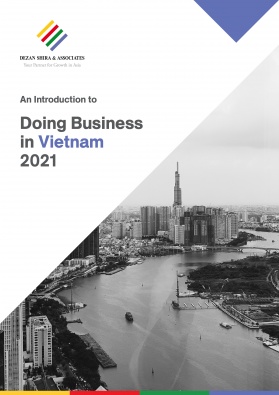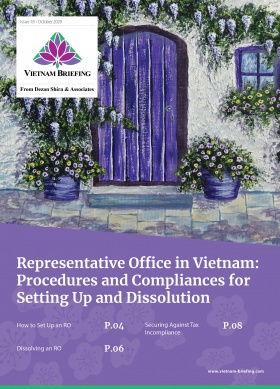Vietnam Unveils New Criteria for Hi-tech Enterprises: Decision 10
The government issued Decision No. 10/2021/QD-TTg which details criteria for identifying hi-tech businesses. The Decision will be effective April 30.
The decision lists certain conditions that are applicable for businesses to be considered as hi-tech enterprises. While businesses need to satisfy conditions as stated in the Law on High Technology as well as the Law on Investment, in addition to this, Decision 10 lists specific conditions needed to qualify as a high-tech business.
Conditions to be qualified as hi-tech include:
- at least 70 percent of total annual net revenue derived from hi-tech products;
- at least 0.5 to 2 percent of total annual net revenue allocated to research and development (R&D) activities, or at least 0.5 percent for enterprises with total capital over VND 6 trillion (US$260.87 million) and more than 3000 employees;
- Businesses with total capital of VND 100 billion (US$4.35 million) and more than 200 employees must allocate at least 1 percent to R&D activities; and
- All other businesses should spend at least 2 percent.
Businesses that have currently applied for hi-tech certification are likely to be subject to the new rules.
Tax incentives for hi-tech businesses
In Vietnam, businesses carrying out activities defined as hi-tech are eligible for tax incentives. A corporate income tax (CIT) rate of 10 percent for 15 years, four years of CIT exemption and 50 percent tax reduction for the next nine years is applicable to hi-tech enterprises.
Income from the transfer of hi-technology in difficult socio-economic conditions is also tax-exempt. Preferential tax rates may be extended up to a further 15 years depending on the decision of the government. Land rental exemption is also possible for up to 15 years or even the whole project duration.
Import duty exemptions are applied to imported goods that are used to build fixed assets. Duty exemptions also apply to imported raw materials and supplies that have not been manufactured locally within a five-year period.
Hi-tech businesses are also eligible for state funding and loans depending on the industry. In addition, a 15 percent tax rate is applied to projects in agriculture and aquaculture products
Vietnam keen on attracting hi-tech industries
The new regulations are in line with Resolution 50 on attracting FDI in select hi-tech industries. As Vietnam’s economy grows it is set to become selective in attractive FDI as wants to move up the value chain from a low-cost labor destination to a center for hi-tech industry keeping the environment in mind.
In its socio-economic plan, the government has reiterated that the digital economy and manufacturing are a priority for the government. One of the goals is that hi-tech production from manufacturing and processing will reach at least 45 percent by 2030.
Given these goals, it makes sense that the government is tightening up on criteria for hi-tech businesses as the government moves to attract hi-tech investment. The adoption of Industry 4.0 and AI will further help augment this transformation.
Note: This article was published in July 2015, and has been updated to include the latest developments.
About Us
ASEAN Briefing is produced by Dezan Shira & Associates. The firm assists foreign investors throughout Asia and maintains offices throughout ASEAN, including in Singapore, Hanoi, Ho Chi Minh City, and Da Nang in Vietnam, Munich, and Esen in Germany, Boston, and Salt Lake City in the United States, Milan, Conegliano, and Udine in Italy, in addition to Jakarta, and Batam in Indonesia. We also have partner firms in Malaysia, Bangladesh, the Philippines, and Thailand as well as our practices in China and India. Please contact us at asia@dezshira.com or visit our website at www.dezshira.com.
- Previous Article An Overview of Malaysia’s Investment Corridors
- Next Article Indonesia’s Omnibus Law: Significant Changes for Contract Workers







